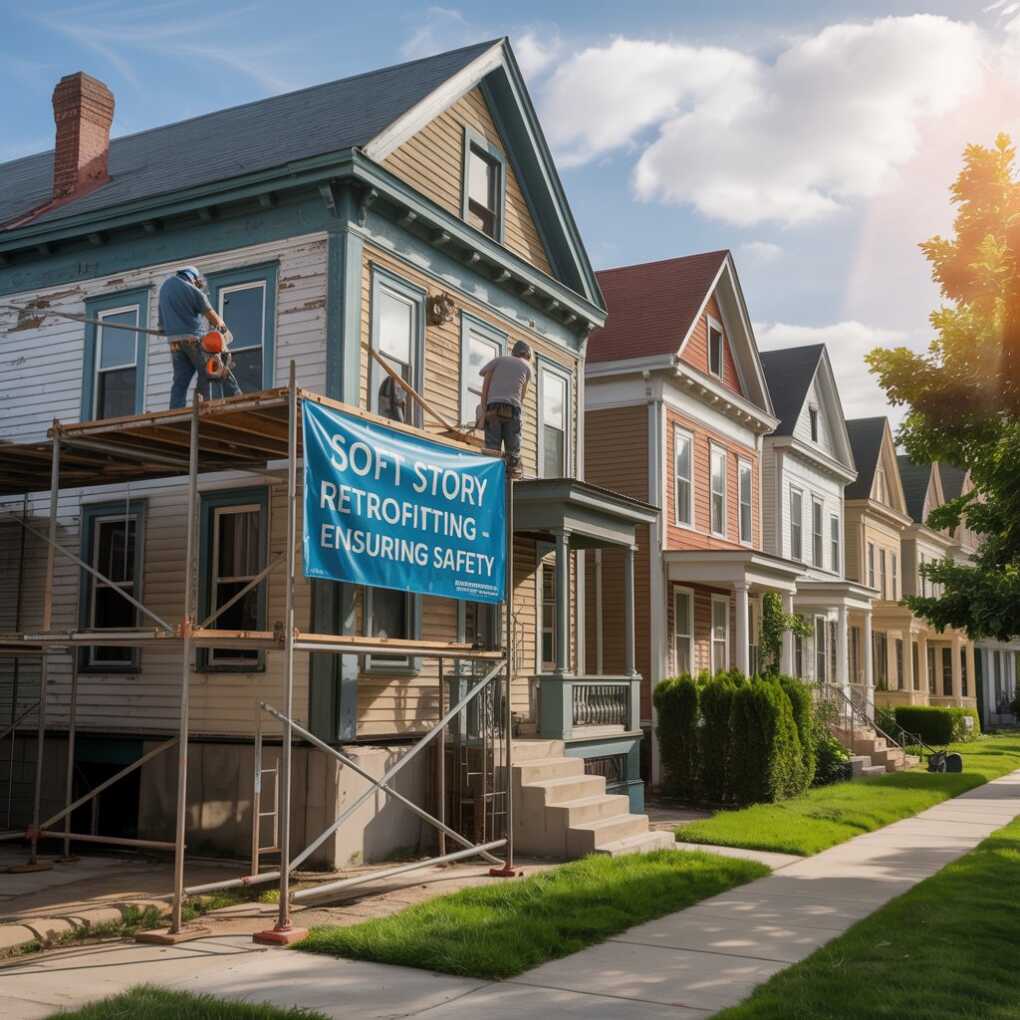Seismic activity threatens millions of structures worldwide, particularly in earthquake-prone regions where ground motion can cause devastating building failures. Among the most vulnerable are soft-story buildings, characterized by weak ground floors featuring large openings such as parking garages, retail spaces, or commercial areas beneath residential levels. These architectural configurations create dangerous structural weaknesses that can lead to catastrophic collapse during seismic events. Soft story building retrofitting represents a critical engineering solution designed to strengthen these vulnerable structures and dramatically reduce collapse risk during earthquakes.

Understanding Structural Retrofit Solutions
Structural retrofitting involves comprehensive upgrades specifically designed to strengthen vulnerable ground floors in multi-story buildings. These targeted modifications address the fundamental weakness inherent in soft story construction, where the ground level lacks adequate structural support compared to upper floors.
The process focuses on addressing seismic vulnerabilities, particularly in buildings with open or under-supported lower levels. Common architectural configurations requiring intervention include buildings with extensive ground-floor parking, large commercial spaces, or structures with minimal wall support on the first floor.
Professional structural engineers employ various techniques to improve structural resilience and earthquake resistance. These methods include installing steel moment frames, adding reinforced shear walls, implementing steel bracing systems, and strengthening existing connections between structural elements. Each approach is carefully selected based on the building’s specific configuration, age, construction materials, and local seismic requirements.
How Soft Story Building Retrofitting Mitigates Collapse Risk
Enhanced Structural Stability
Retrofit techniques significantly reinforce weak ground floors to resist lateral seismic forces, dramatically reducing collapse risk during earthquakes. The process involves installing additional structural elements that create a more robust framework capable of withstanding horizontal earthquake motion.
Key stability improvements include:
- Steel moment frames – Rigid connections that resist lateral movement
- Reinforced concrete shear walls – Solid barriers that distribute seismic forces
- Cross-bracing systems – Diagonal supports that prevent structural deformation
- Foundation anchoring – Secure connections between the building and the ground
Improved Load Distribution
Structural modifications, supported by proper foundation repair, ensure that earthquake forces are evenly distributed across a building’s entire structural system, preventing localized failures that can trigger progressive collapse. By strengthening connection points and adding load-bearing elements, retrofits create multiple pathways for seismic energy to travel through the structure safely.
This improved distribution prevents stress concentration in vulnerable areas and maintains structural integrity even under intense seismic activity. The result is a building that can flex and move with earthquake motion rather than experiencing catastrophic failure.
Adherence to Seismic Standards
Modern retrofit projects help buildings meet rigorous seismic safety codes established by engineering organizations and building departments. These standards reflect decades of research into earthquake behavior and structural response, ensuring that upgraded buildings can withstand expected seismic forces in their geographic region.
Compliance benefits include:
- Legal protection – Meeting current building code requirements
- Insurance advantages – Potential premium reductions for compliant structures
- Market value – Enhanced property appeal to safety-conscious buyers
- Peace of mind – Confidence in structural performance during seismic events
Proven Effectiveness
Engineering studies consistently demonstrate that retrofitted buildings perform significantly better during earthquakes compared to non-retrofitted structures. Case studies from major seismic events show that buildings with proper structural upgrades experience minimal damage while similar unmodified structures suffer severe damage or collapse.
Benefits for Property Owners and Communities
Increased Safety
Structural upgrade projects prioritize occupant protection by minimizing collapse risks that threaten residents, employees, and visitors. The improvements create safer environments that can withstand seismic forces without catastrophic failure. This enhanced safety provides peace of mind for building occupants and demonstrates property owners’ commitment to protecting human life through proactive structural improvements.
Property Value Preservation
Seismic upgrades safeguard property investments by preventing costly earthquake-related damage that can render buildings uninhabitable or require expensive reconstruction. The upfront investment in structural improvements often proves cost-effective compared to potential earthquake damage, insurance claims, and business interruption losses. Additionally, retrofitted buildings may qualify for reduced insurance premiums and demonstrate long-term value retention in earthquake-prone markets.
Community Resilience
Upgraded buildings contribute to safer, more prepared communities in seismic zones by reducing the overall risk of widespread structural damage during earthquakes. When multiple buildings in a neighborhood undergo structural improvements, the entire community becomes more resilient and better equipped to recover from seismic events. This collective improvement benefits emergency response capabilities and reduces the burden on public resources during disaster recovery efforts.
Access to Incentives
Many jurisdictions offer financial incentives, grants, or funding programs to encourage seismic upgrade projects. These programs recognize the public benefit of improved seismic safety and provide property owners with financial assistance to offset costs. Some areas also offer expedited permitting processes, tax incentives, or low-interest loans for buildings that complete seismic upgrades.
The Importance of Proactive Action
Earthquakes remain fundamentally unpredictable, making preemptive structural upgrades essential for building safety and occupant protection. Seismic events can occur without warning, leaving no time for emergency structural modifications.
Property owners who postpone improvements risk catastrophic consequences that could have been prevented through timely action and professional structural assessment. The window of opportunity for structural improvements exists only before an earthquake occurs, making immediate action crucial for protecting lives and property investments.
Professional structural engineers and specialty contractors provide comprehensive services to assess and upgrade soft-story buildings efficiently and effectively. These experts can:
- Evaluate existing structures – Identify specific vulnerabilities and risk factors
- Design appropriate solutions – Create customized retrofit plans for each building
- Oversee implementation – Ensure proper installation and code compliance
- Provide documentation – Supply certification for insurance and regulatory purposes
Summing Up
Soft story building retrofitting plays a critical role in preventing building collapse and enhancing safety in earthquake-prone areas worldwide. These targeted structural improvements address fundamental vulnerabilities in soft-story buildings, creating safer environments for occupants and more resilient communities. The proven effectiveness of retrofit techniques, combined with their ability to preserve property values and protect human life, makes them an essential investment for responsible property ownership.
Property owners should schedule professional structural assessments and explore upgrade options to protect their buildings from seismic risks. Taking proactive steps today ensures that buildings can withstand future earthquakes and continue serving their communities safely. Through widespread adoption of seismic safety measures, we can foster safer, more resilient communities prepared for the challenges of tomorrow.
